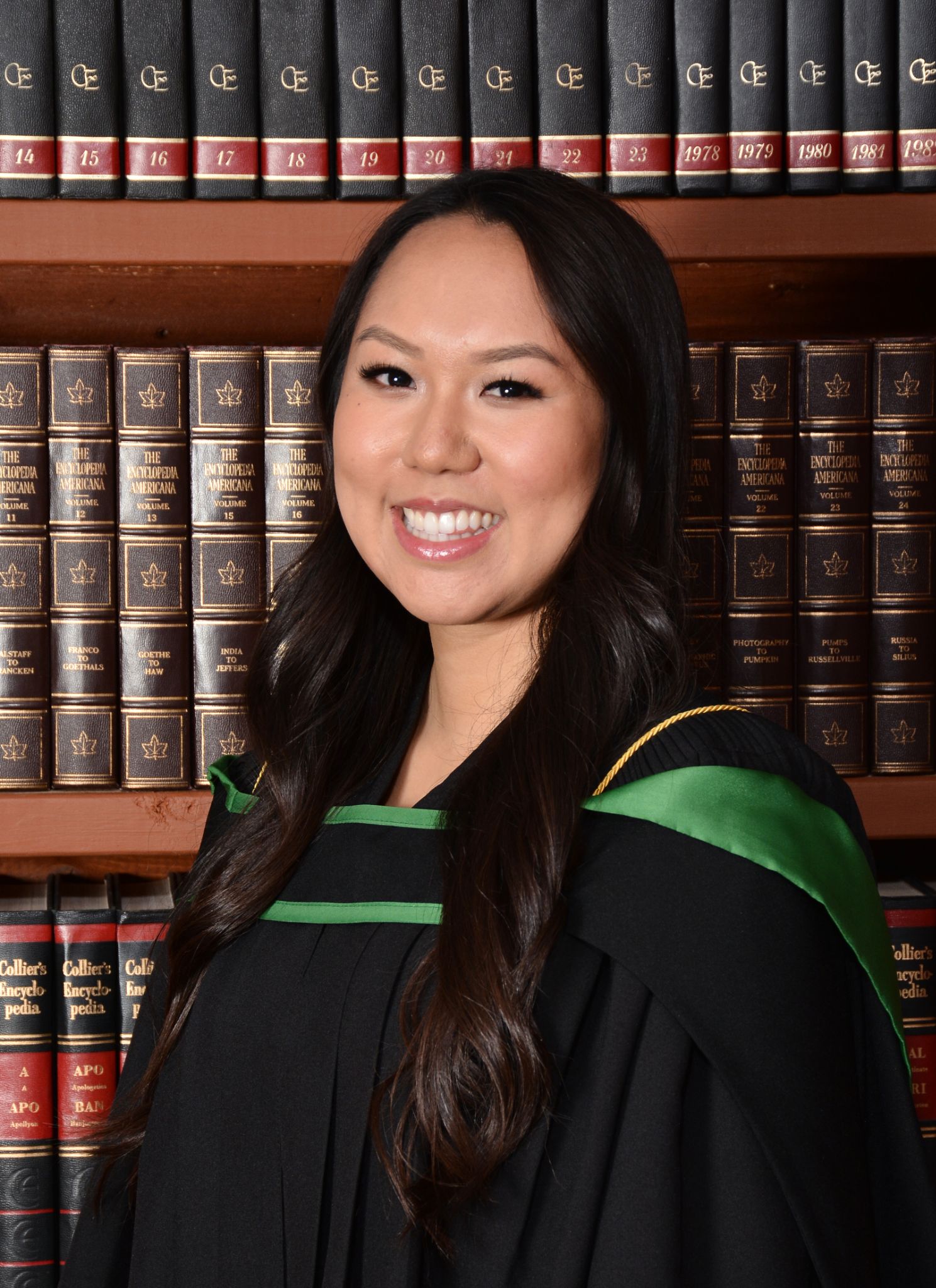 Karmen is graduating with a BKin in Physical Health and Education. After graduation, Karmen plans on enrolling in the Bachelor of Education program to become a secondary school physical education teacher.
Karmen is graduating with a BKin in Physical Health and Education. After graduation, Karmen plans on enrolling in the Bachelor of Education program to become a secondary school physical education teacher.
As an active member of the KIN community, Karmen served as a member of the KUS as VP Communications for 2019-2020, “I rebranded the KUS with a new logo and brand identity and created the first ever KUS student agenda. I was also a KUS Street Team Member, KUS Sports REC Coordinator, UBC KIN Orientation Leader, UBC KIN BodSquad Imagine Day Leader, and KIN Camp Leader.” Outside of KIN, Karmen worked as a Personal Trainer and Group Fitness Instructor for UBC REC, an Active Start & Fundamentals Coach for Special Olympics BC. She was President of the Alpha Gamma Delta sorority and held the role of the Junior Graphic Designer for the Alma Mater Society of UBC.
Upon reflection, Karmen says “I am very grateful for KIN for allowing me to have a flexible and diverse degree with opportunities to study various disciplines of kinesiology, such as coaching and education, physiology and anatomy, and sport psychology and sociology. It has been extremely fulfilling learning how to approach kinesiology in a holistic way with the goal of promoting lifelong participation in physical activity within ourselves and others.”
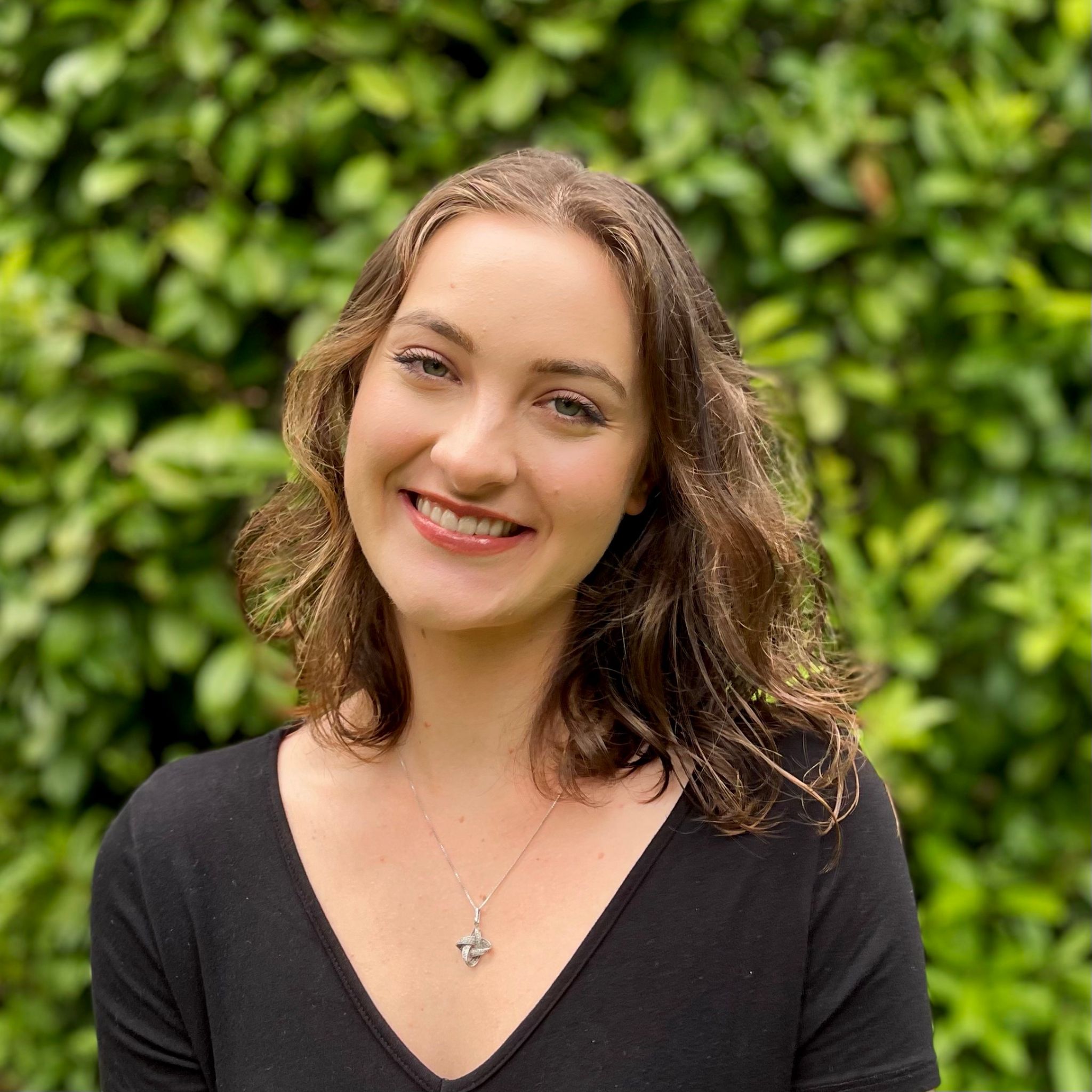 Lana is graduating this Spring, 2021 with a BKin from the interdisciplinary stream. After graduation, she plans to apply to the British Columbia Association of Kinesiologists to be certified as a Registered Kinesiologist. Eventually, Lana would like to move back to the United States to become an Exercise Physiologist and work with athletes.
Lana is graduating this Spring, 2021 with a BKin from the interdisciplinary stream. After graduation, she plans to apply to the British Columbia Association of Kinesiologists to be certified as a Registered Kinesiologist. Eventually, Lana would like to move back to the United States to become an Exercise Physiologist and work with athletes.
Upon reflection, Lana says that UBC KIN “exceeded my wants and expectations in terms of course material and sense of community. I think everyone agrees that what truly makes the program special is its size and spirit, since it is made up of driven individuals who truly love what they are studying. The most important thing I have learned throughout my degree is how important support systems are to mental and physical health. You can work through and accomplish almost anything with the right people in your corner.”
Lana was a research assistant for Alison Williams in the Lam Lab at ICORD, where she “assisted people who had cervical spine injuries use exoskeleton walking devices to test differences in quality of life. It was an incredible opportunity to learn more about Anatomy and Physiology and to see what graduate research looks like in my field.” Lana also served as the Director of Community Service for Alpha Pi UBC, where she set up new volunteer opportunities in local community centers and organized a team to raise money through the Run For The Cure Canadian Cancer Society.
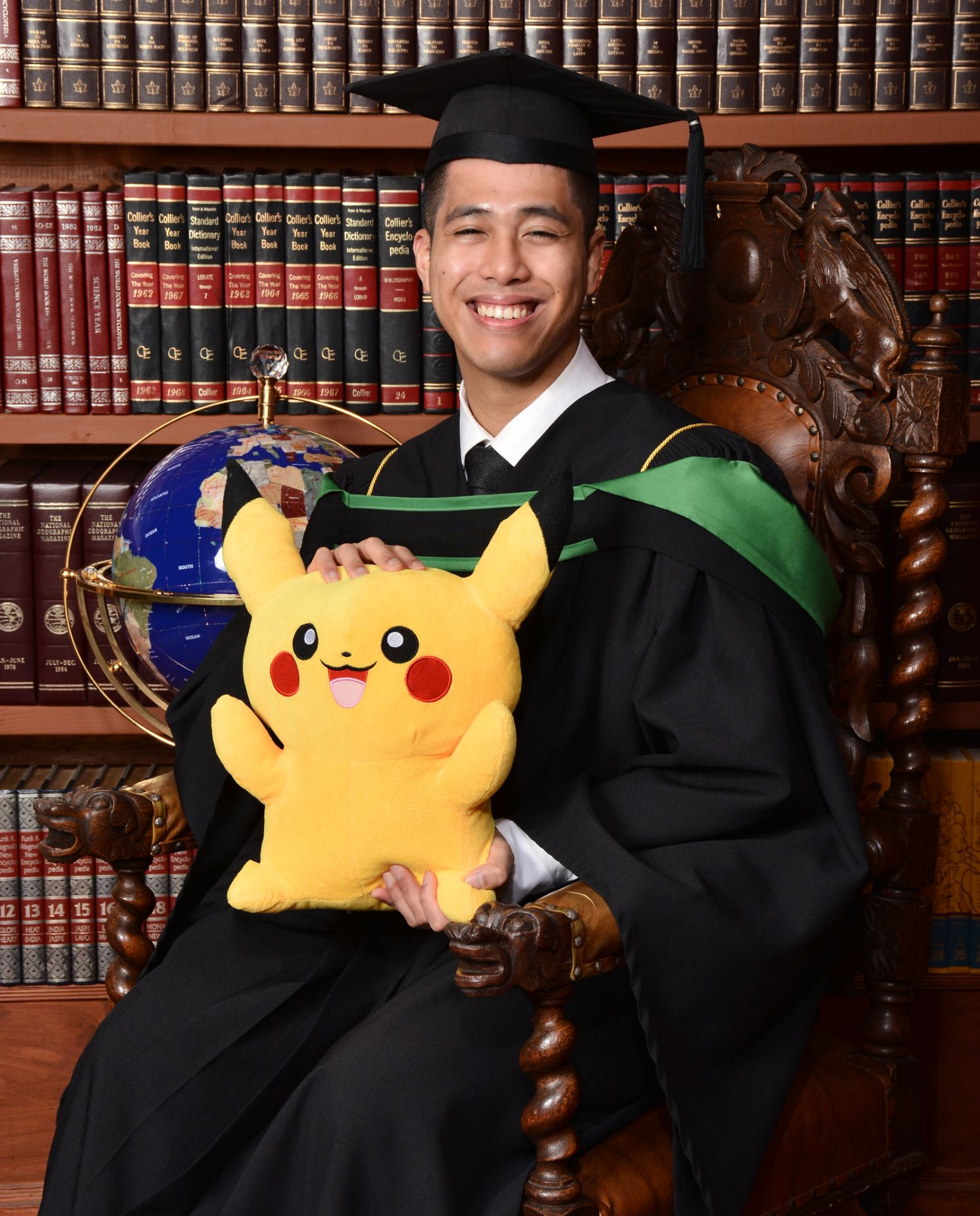 Sage is graduating this Spring, 2021 with a BKin in the interdisciplinary stream. After graduation, Sage plans to become a strength and conditioning coach to help people achieve their fitness goals. “Whether it is rehab after surgery or someone looking to improve their marathon time, I hope I can help them with my knowledge and education.” Sage says, “I have a goal of starting out my own coaching business to help younger athletes (middle/high school) with their strength and conditioning for sport and recreation. The vision is to empower these kids to live active lifestyles while enjoying the benefits of a training program.” Sage also hopes to celebrate this milestone by safely traveling to Europe with his friends once the COVID-19 travel restrictions are lifted.
Sage is graduating this Spring, 2021 with a BKin in the interdisciplinary stream. After graduation, Sage plans to become a strength and conditioning coach to help people achieve their fitness goals. “Whether it is rehab after surgery or someone looking to improve their marathon time, I hope I can help them with my knowledge and education.” Sage says, “I have a goal of starting out my own coaching business to help younger athletes (middle/high school) with their strength and conditioning for sport and recreation. The vision is to empower these kids to live active lifestyles while enjoying the benefits of a training program.” Sage also hopes to celebrate this milestone by safely traveling to Europe with his friends once the COVID-19 travel restrictions are lifted.
When asked what drew him to UBC KIN, Sage says, “I have done weightlifting, sports, and training all my life. When given an opportunity to study exercise science, UBC KIN was a no brainer.” Sage reflects on the most important thing he learned in KIN: “How to expand your social circle and talk to new people. I have met so many cool people from KIN that I still stay in touch with. You never know how your network can help you secure a new job, volunteer opportunity, or connect you to another person that may help guide you in your professional and personal life.”
“I hope that I can impact people’s lives in a positive way and inspire them to be better every day! Fitness and coaching is one aspect of doing that in my career goals. I want to leave a legacy where I chase after the goals that make me happy and fulfilled and life.”
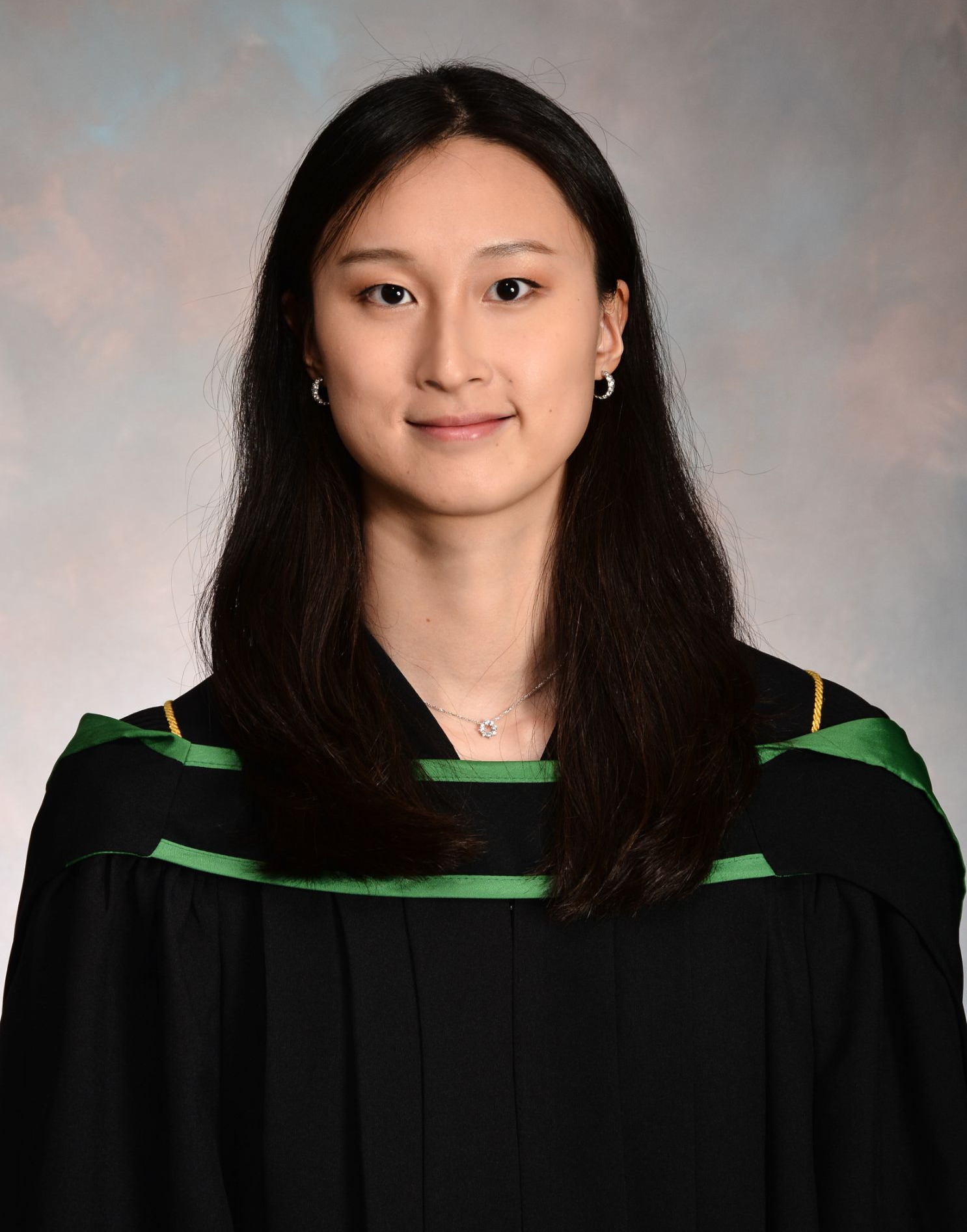 Karen is graduating this Spring with a BKin in the interdisciplinary stream. She states why she was drawn to the KIN program, “I am very interested in human physiology, anatomy, and biomechanics.” Karen played on the varsity swimming team during her undergraduate degree, and hopes to attend the Olympics in Tokyo after graduation.
Karen is graduating this Spring with a BKin in the interdisciplinary stream. She states why she was drawn to the KIN program, “I am very interested in human physiology, anatomy, and biomechanics.” Karen played on the varsity swimming team during her undergraduate degree, and hopes to attend the Olympics in Tokyo after graduation.
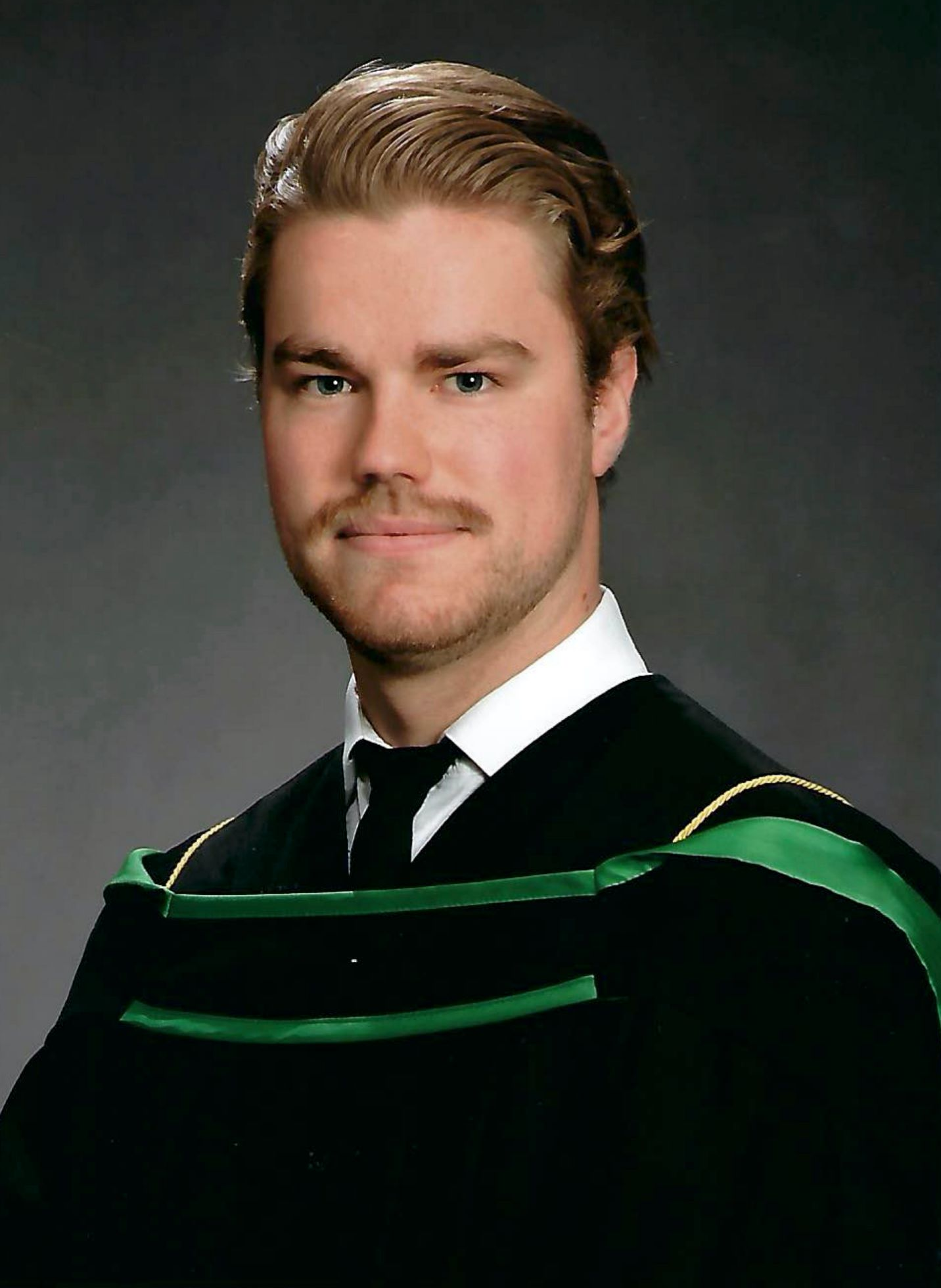 Ford is graduating this Spring with a BKin in the interdisciplinary stream. Upon graduation, Ford plans to practice prehospital care as a paramedic or physician.
Ford is graduating this Spring with a BKin in the interdisciplinary stream. Upon graduation, Ford plans to practice prehospital care as a paramedic or physician.
When asked why he decided to join UBC KIN, Ford says, “I was drawn to the program as it was well regarded. KIN has a great community feel and a definite focus on combining academics with practical skills.” Ford believes that “it’s important to also have fun outside of the classroom – making friends and having novel experiences is what university is all about.” Ford was also a member of the KUS in his first and second years.
Presently, Ford conducts research with BC Emergency Health Services and the St. Paul’s Emergency Department under Dr. Brian Grunau. “I am currently working on publications in paramedic assessment of ECMO candidates and pediatric out of hospital cardiac arrest.”
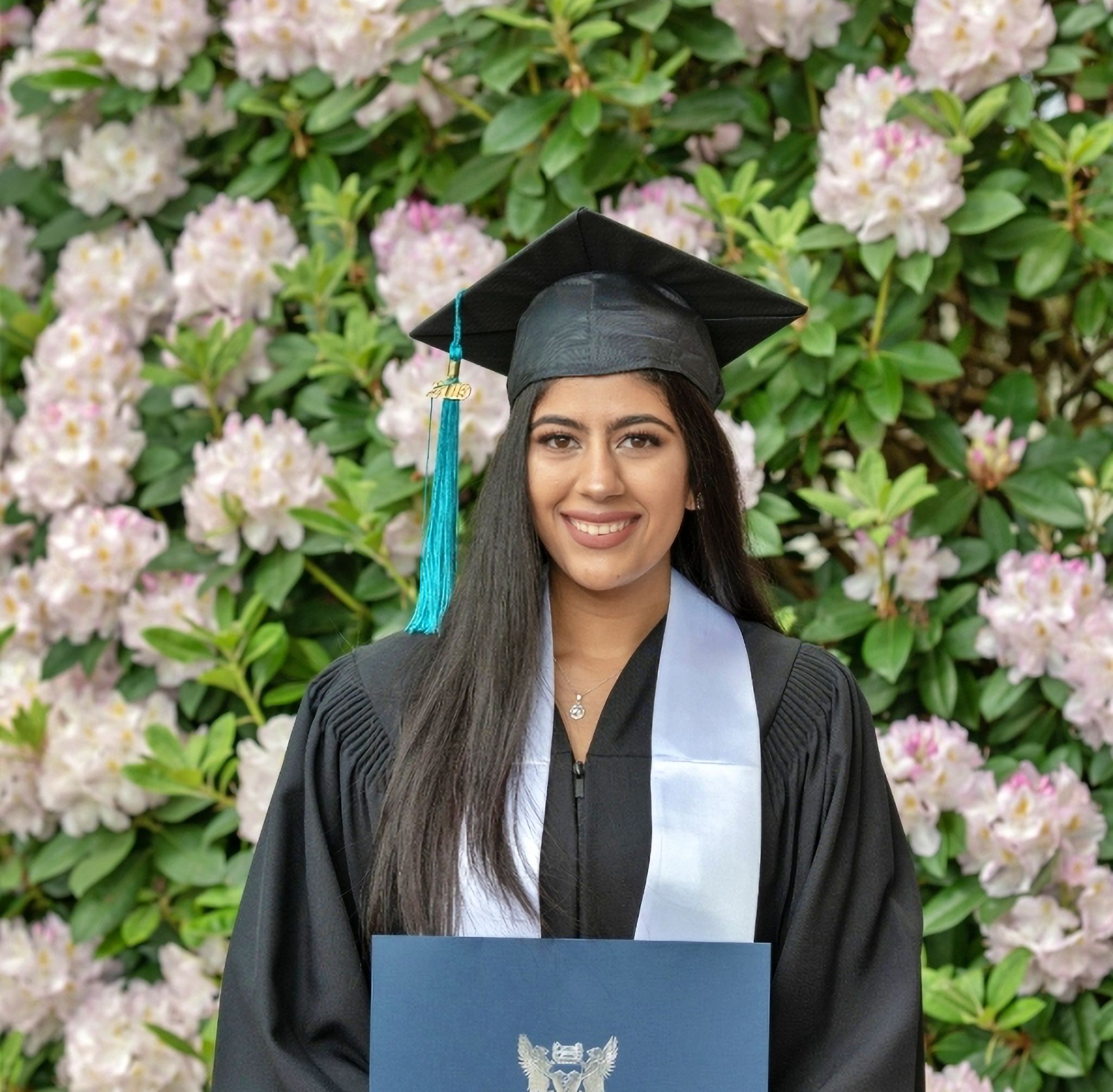 “I learned to facilitate discussions that relate to all aspects of health care.”
“I learned to facilitate discussions that relate to all aspects of health care.”
Aisha is graduating on June 2, 2021 from the Interdisciplinary stream. She says that she
“loved how KIN professors have such diverse backgrounds and that when subjects were brought up, we were able to discuss the multitude of topics with kinesiology that are applicable. KIN is a smaller community, so it’s easier to get to know each other, make connections and become a community in itself.” Upon reflection, Aisha says that the most important thing she learned in KIN was “how to facilitate discussions that relate to all aspects of health care.”
After graduation, Aisha plans to complete my Masters of Occupational Therapy right here at UBC! She was involved with the KUS as a street team member, senior orientation leader, orientation leader and most recently as a BIPOC committee member! She states that her “goals are to be involved in health care that incorporates both physical and mental health by involving practices that provide patient advocacy. I want to work with other healthcare professionals to facilitate discussions that empower patients to become more knowledgeable about their own health and give them the confidence to achieve any goal they set; having a focus that accounts for physical and mental health and their interconnections.
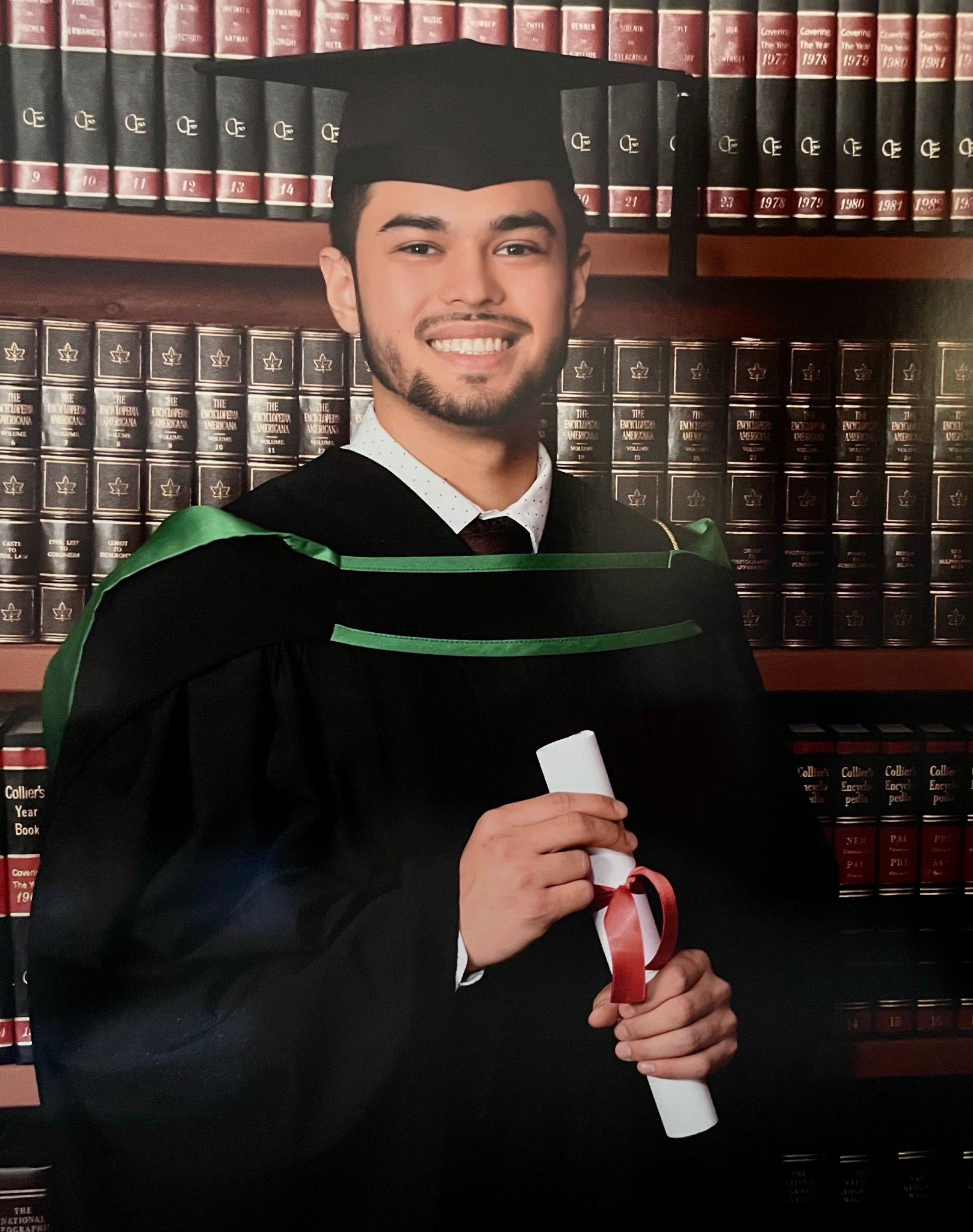 Felman Faria graduates with a BKin in the Health Sciences Stream. He states that he “loves being active and being able to help others live active lives.”
Felman Faria graduates with a BKin in the Health Sciences Stream. He states that he “loves being active and being able to help others live active lives.”
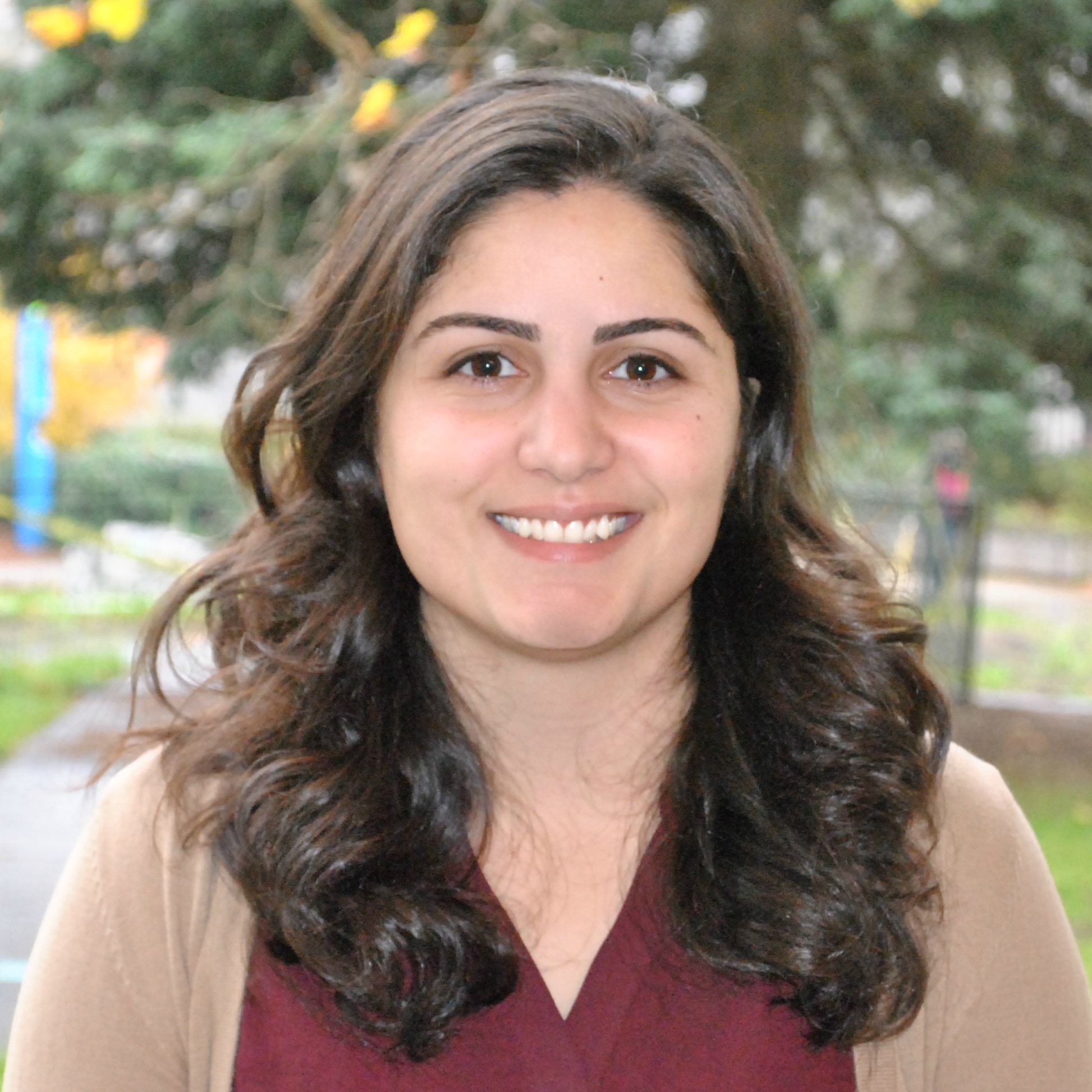 Negin Riazi is graduating from UBC KIN with a PhD this Spring and will be continuing a Post Doctoral Fellowship at Brock University with Dr. Karen Patte. Her research will focus on the COVID-19 pandemic and the related impacts of school closures and reopenings on youth mental health. Negin has been selected as the graduate speaker for the School of Kinesiology Spring 2021 graduation reception.
Negin Riazi is graduating from UBC KIN with a PhD this Spring and will be continuing a Post Doctoral Fellowship at Brock University with Dr. Karen Patte. Her research will focus on the COVID-19 pandemic and the related impacts of school closures and reopenings on youth mental health. Negin has been selected as the graduate speaker for the School of Kinesiology Spring 2021 graduation reception.
Negin’s research studies at UBC included two main foci: children’s independent mobility and population-level physical activity initiatives, and policy-level interventions. “I was a collaborator in several research projects that focused on children’s independent mobility, active transportation, and outdoor play in the knowledge translation of the Canadian 24-Movement Guidelines for Children and Youth (5-17 years) and their Early Years (0-4 years).” Negin reflects, “I had the privilege of working with a stellar and supportive supervisor, Dr. Guy Faulkner, who encouraged the knowledge translation of our research. I was involved in the translation of the 24-Hour Movement Guidelines for the Early Years (0-4 years) into an animated video, and the creation of a documentary on children’s independent mobility called ‘Running Free.’ We were also able to discuss seven recommendations for increasing children’s independent mobility in an article for the online newsletter, ‘The Conversation’.”
When asked if she had any words of wisdom for students who are thinking about attending grad school, Negin says “Grad school is what you make it. Get involved, collaborate, make connections with people, and push yourself to learn new things. One piece of advice I received was to find something that I loved and was interested in – waking up to go to school and work is much easier when you enjoy what you do!”
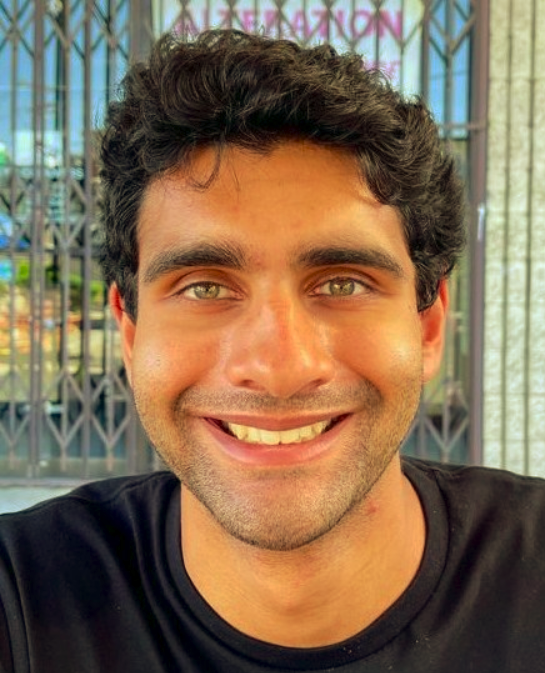 Aayush Malhotra completed his BKin at UBC and will now receive his Masters in Kinesiology on June 2nd. Aayush says that during the COVID pandemic, “I was presented with a choice regarding how I wanted to spend what turned out to be quite a long time in isolation. I felt it would be more productive to continue bettering myself and learning more about a topic which I am deeply passionate about. So I applied, and was accepted, into the MKIN program at UBC. Looking back, I am thrilled that I was able to dedicate much of my time during the pandemic to becoming a more well rounded student and professional!”
Aayush Malhotra completed his BKin at UBC and will now receive his Masters in Kinesiology on June 2nd. Aayush says that during the COVID pandemic, “I was presented with a choice regarding how I wanted to spend what turned out to be quite a long time in isolation. I felt it would be more productive to continue bettering myself and learning more about a topic which I am deeply passionate about. So I applied, and was accepted, into the MKIN program at UBC. Looking back, I am thrilled that I was able to dedicate much of my time during the pandemic to becoming a more well rounded student and professional!”
As with many students, the academic year ended up being rather isolated for Aayush, but he worked collaboratively with students across different faculties for different mental health initiatives, such as the AMS Peer Support. As a result of this particularly challenging year, Aayush advises others, “it’s okay to reach out for help. Life is hard on its own, but especially in a global pandemic it can quickly become overwhelming. This year more than any other, I have leaned heavily on my professors, on my family and on my fellow students. Having done so, I was able to end the semester on a high note and have weathered my own difficulties during the year. I think that the ability to recognize when your personal resources are being exhausted, and to then take the steps to find support, has been the most valuable learning experience that I have derived during the year.”
Aayush hopes to use his MKIN degree as a jumping off point into other physiology-related fields, such as pursuing a PhD in comparative physiology (a subset of zoology) or in medicine where he aims to become a surgeon in the long term. In the meantime, he plans on enjoying himself and making up for lost time due to being quarantined for the better part of a year.
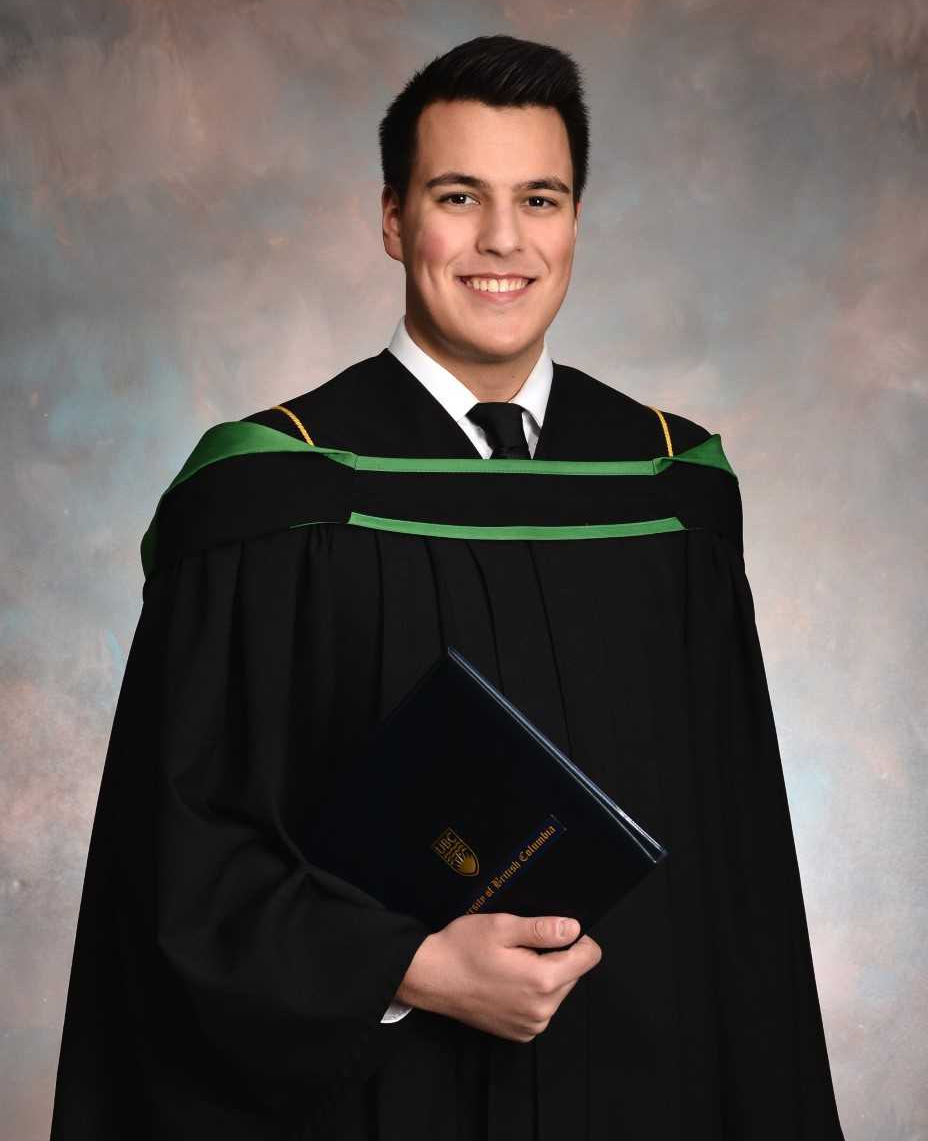 Grant is graduating with a BKin, in the health sciences stream and will start his MKin at UBC in the fall. After he completes his Masters, Grant wishes to pursue a career in medicine. “I hope to specialize as a general practitioner to empower individuals through proactive medical support and intervention.”
Grant is graduating with a BKin, in the health sciences stream and will start his MKin at UBC in the fall. After he completes his Masters, Grant wishes to pursue a career in medicine. “I hope to specialize as a general practitioner to empower individuals through proactive medical support and intervention.”
Throughout his undergraduate degree, Grant spearheaded a new initiative in the KUS called “Campus KINnections” which pairs upper year students with first year and transfer students in Kinesiology in a year-long partnership. “I also worked as a research assistant in the Indigenous Studies in Kinesiology lab and was a member of the KUS BIPOC committee.”
Outside of Kinesiology, Grant has competed nationally as a water polo athlete, participated as a member of UBC’s University Singers, worked as a Residence Advisor for the past three years, presented a workshop on redefining leadership in the Student Leadership Conference, and was VP Campus Engagement for the Student Alumni Council.
One of Grant’s favourite events in KIN has always been the ‘Dinner for Kinners.’ “I prepare a whole day in advance just to eat as much as possible! My favourite study place on campus is the education library because it is so silent, but actually because it is dangerously close to Tim Hortons.”
“I am incredibly grateful for all of the wonderful opportunities I have had at UBC and the amazing people I have met along the way. UBC truly is a place where if you have an interest or an idea, there are people here that will support you, guide you, and celebrate with you.”
 Karmen is graduating with a BKin in Physical Health and Education. After graduation, Karmen plans on enrolling in the Bachelor of Education program to become a secondary school physical education teacher.
Karmen is graduating with a BKin in Physical Health and Education. After graduation, Karmen plans on enrolling in the Bachelor of Education program to become a secondary school physical education teacher. Lana is graduating this Spring, 2021 with a BKin from the interdisciplinary stream. After graduation, she plans to apply to the British Columbia Association of Kinesiologists to be certified as a Registered Kinesiologist. Eventually, Lana would like to move back to the United States to become an Exercise Physiologist and work with athletes.
Lana is graduating this Spring, 2021 with a BKin from the interdisciplinary stream. After graduation, she plans to apply to the British Columbia Association of Kinesiologists to be certified as a Registered Kinesiologist. Eventually, Lana would like to move back to the United States to become an Exercise Physiologist and work with athletes.  Sage is graduating this Spring, 2021 with a BKin in the interdisciplinary stream. After graduation, Sage plans to become a strength and conditioning coach to help people achieve their fitness goals. “Whether it is rehab after surgery or someone looking to improve their marathon time, I hope I can help them with my knowledge and education.” Sage says, “I have a goal of starting out my own coaching business to help younger athletes (middle/high school) with their strength and conditioning for sport and recreation. The vision is to empower these kids to live active lifestyles while enjoying the benefits of a training program.” Sage also hopes to celebrate this milestone by safely traveling to Europe with his friends once the COVID-19 travel restrictions are lifted.
Sage is graduating this Spring, 2021 with a BKin in the interdisciplinary stream. After graduation, Sage plans to become a strength and conditioning coach to help people achieve their fitness goals. “Whether it is rehab after surgery or someone looking to improve their marathon time, I hope I can help them with my knowledge and education.” Sage says, “I have a goal of starting out my own coaching business to help younger athletes (middle/high school) with their strength and conditioning for sport and recreation. The vision is to empower these kids to live active lifestyles while enjoying the benefits of a training program.” Sage also hopes to celebrate this milestone by safely traveling to Europe with his friends once the COVID-19 travel restrictions are lifted.  Karen is graduating this Spring with a BKin in the interdisciplinary stream. She states why she was drawn to the KIN program, “I am very interested in human physiology, anatomy, and biomechanics.” Karen played on the varsity swimming team during her undergraduate degree, and hopes to attend the Olympics in Tokyo after graduation.
Karen is graduating this Spring with a BKin in the interdisciplinary stream. She states why she was drawn to the KIN program, “I am very interested in human physiology, anatomy, and biomechanics.” Karen played on the varsity swimming team during her undergraduate degree, and hopes to attend the Olympics in Tokyo after graduation. Ford is graduating this Spring with a BKin in the interdisciplinary stream. Upon graduation, Ford plans to practice prehospital care as a paramedic or physician.
Ford is graduating this Spring with a BKin in the interdisciplinary stream. Upon graduation, Ford plans to practice prehospital care as a paramedic or physician. “I learned to facilitate discussions that relate to all aspects of health care.”
“I learned to facilitate discussions that relate to all aspects of health care.” Felman Faria graduates with a BKin in the Health Sciences Stream. He states that he “loves being active and being able to help others live active lives.”
Felman Faria graduates with a BKin in the Health Sciences Stream. He states that he “loves being active and being able to help others live active lives.” Negin Riazi is graduating from UBC KIN with a PhD this Spring and will be continuing a Post Doctoral Fellowship at Brock University with Dr. Karen Patte. Her research will focus on the COVID-19 pandemic and the related impacts of school closures and reopenings on youth mental health. Negin has been selected as the graduate speaker for the School of Kinesiology Spring 2021 graduation reception.
Negin Riazi is graduating from UBC KIN with a PhD this Spring and will be continuing a Post Doctoral Fellowship at Brock University with Dr. Karen Patte. Her research will focus on the COVID-19 pandemic and the related impacts of school closures and reopenings on youth mental health. Negin has been selected as the graduate speaker for the School of Kinesiology Spring 2021 graduation reception.  Aayush Malhotra completed his BKin at UBC and will now receive his Masters in Kinesiology on June 2nd. Aayush says that during the COVID pandemic, “I was presented with a choice regarding how I wanted to spend what turned out to be quite a long time in isolation. I felt it would be more productive to continue bettering myself and learning more about a topic which I am deeply passionate about. So I applied, and was accepted, into the MKIN program at UBC. Looking back, I am thrilled that I was able to dedicate much of my time during the pandemic to becoming a more well rounded student and professional!”
Aayush Malhotra completed his BKin at UBC and will now receive his Masters in Kinesiology on June 2nd. Aayush says that during the COVID pandemic, “I was presented with a choice regarding how I wanted to spend what turned out to be quite a long time in isolation. I felt it would be more productive to continue bettering myself and learning more about a topic which I am deeply passionate about. So I applied, and was accepted, into the MKIN program at UBC. Looking back, I am thrilled that I was able to dedicate much of my time during the pandemic to becoming a more well rounded student and professional!” Grant is graduating with a BKin, in the health sciences stream and will start his MKin at UBC in the fall. After he completes his Masters, Grant wishes to pursue a career in medicine. “I hope to specialize as a general practitioner to empower individuals through proactive medical support and intervention.”
Grant is graduating with a BKin, in the health sciences stream and will start his MKin at UBC in the fall. After he completes his Masters, Grant wishes to pursue a career in medicine. “I hope to specialize as a general practitioner to empower individuals through proactive medical support and intervention.”